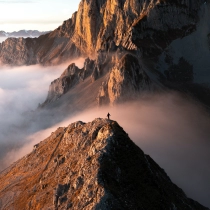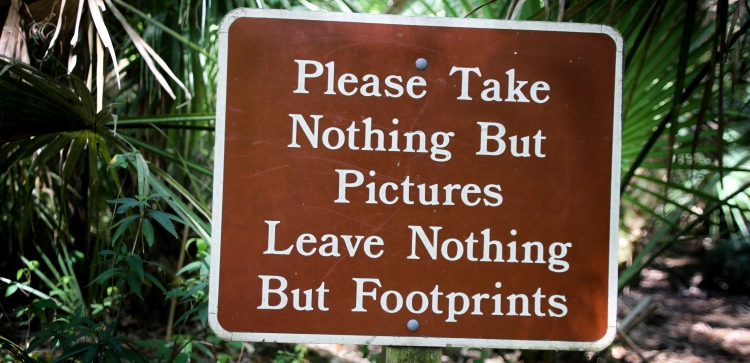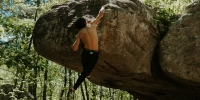Climbing Ethics & Environmental Impact: Preserving The Sport And Nature

Climbing Ethics & Environmental Impact: Preserving the Sport and Nature
Climbing is more than just a physical activity; it's a deep connection with nature and a vibrant community. At its core, this connection is governed by a set of unwritten rules and principles known as climbing ethics. These ethics serve as a moral compass, influencing behavior, guiding conservation efforts, and shaping the overall impact climbers have on the natural environment. As the popularity of climbing grows, understanding and practicing proper crag etiquette, especially at crowded locations, becomes increasingly vital to ensure safety, preserve the environment, and foster a respectful and enjoyable experience for everyone.
This guide will explore the profound significance of ethics in climbing, detail the essential etiquette for navigating crowded crags, and provide actionable tips for minimizing your environmental footprint, ensuring we uphold the values that define our sport and protect the natural world.
- Climbing Ethics & Environmental Impact: Preserving The Sport And Nature
- The Significance Of Ethics In Climbing
- Crag Etiquette: Navigating Crowded Climbing Areas
- 1. Prioritizing Safety Through Communication And Courtesy
- 2. Sharing Climbing Routes And Space
- 3. Respecting Fixed Hardware And Local Regulations
- Minimizing Environmental Impact While Climbing
- Frequently Asked Questions
- What Is The Significance Of Ethics In Climbing?
- What Are "Leave No Trace" Principles In Climbing?
- How Does Proper Etiquette Contribute To Safety At Crowded Crags?
- What Is Minimalist Anchoring?
- How Should Climbers Share Routes At Crowded Crags?
- Why Is Cultural Sensitivity Important In Climbing?
- What Are Common Communication Commands At The Crag?
- Should I Brush Off Chalk Marks From Holds After Climbing?
- Why Is It Important To Respect Crag Closures?
- How Can Climbers Minimize Their Environmental Impact At A Crag?
The Significance of Ethics in Climbing
Climbing ethics are the foundational principles that guide responsible behavior in the climbing world. They are crucial for several reasons:
-
Environmental Stewardship: Ethics promote a deep respect for the natural environment. This includes adhering to "Leave No Trace" principles, minimizing impact on rock formations, and protecting fragile ecosystems.
-
Preservation of Climbing Areas: Ethical practices ensure the longevity of climbing locations. This involves responsible route development, minimizing erosion, and respecting local regulations.
-
Community Respect and Harmony: Ethics foster a culture of respect among climbers, landowners, and other outdoor enthusiasts. This includes being mindful of noise, privacy, and shared resources.
-
Maintaining the Spirit of the Sport: Ethical considerations often touch upon the style of ascent (e.g., ground-up vs. top-down, free climbing vs. aid climbing), preserving the challenge and adventure inherent in climbing.
-
Safety Standards: While not explicitly safety rules, ethical practices often align with safe behaviors, such as responsible gear use and clear communication.
Key Ethical Principles
-
Leave No Trace: This overarching principle means packing out everything you pack in, minimizing impact on vegetation and rock, and disposing of waste properly.
-
Minimalist Anchoring: Using the least invasive methods for establishing anchors, especially in traditional climbing, to preserve the rock.
-
Respect for First Ascents: Acknowledging and respecting the efforts of those who first established a route, including their chosen style and vision.
-
Cultural Sensitivity: Being aware of and respecting local customs, land use, and any indigenous significance of climbing areas.
Crag Etiquette: Navigating Crowded Climbing Areas
When crags become popular, good etiquette is paramount. It's a way of showing respect for fellow climbers, the environment, and the climbing areas themselves.
1. Prioritizing Safety Through Communication and Courtesy
In crowded areas, clear communication and courtesy are even more critical to prevent accidents and ensure a smooth experience.
-
Clear Calls: Always use loud, clear, and universally understood climbing commands (e.g., "Clipping!", "Belay on!", "Take!", "Lower!"). Ensure your partner and those around you can hear and understand.
-
Situational Awareness: Be constantly aware of climbers above and below you, and adjust your actions to avoid interfering with others or creating hazards (e.g., dislodging rocks).
-
Minimizing Distractions: Keep conversations and music volume low to avoid distracting others, especially belayers.
2. Sharing Climbing Routes and Space
Crowded crags require patience and a willingness to share.
-
Queuing Respectfully: If a route is occupied, wait your turn patiently. Avoid hovering or pressuring climbers on the wall.
-
Avoiding Hogging Routes: Limit the number of times you climb a popular route consecutively, especially if others are waiting. Be mindful of the time you spend on a route.
-
Clear Communication on Routes: Before starting a route, communicate with climbers nearby to ensure you won't interfere with their ropes or climbing lines.
-
Managing Your Gear: Keep your gear organized and consolidated at the base of the climb, out of the way of others. Avoid spreading out your ropes and bags across the entire crag base.
-
Limiting Group Size: Consider visiting less popular areas or off-peak times if you are with a large group to minimize impact.
3. Respecting Fixed Hardware and Local Regulations
-
Inspect Fixed Gear: While fixed anchors and bolts are designed for safety, always inspect them before use. Report any damaged or questionable hardware to local climbing organizations.
-
Adhere to Closures: Respect any temporary or permanent climbing area closures, which are often in place for environmental protection, nesting birds, or safety reasons.
-
Follow Parking Rules: Park only in designated areas to avoid blocking access or upsetting landowners.
Minimizing Environmental Impact While Climbing
Sustainable climbing is crucial for the preservation of climbing areas, respect for local communities, and personal responsibility. Every climber has a collective power in preserving the beauty and serenity of natural climbing environments for future generations.
Actionable Tips for Eco-Friendly Climbing:
-
Strict Adherence to Leave No Trace Principles: This is the cornerstone of minimizing impact. Always pack out everything you pack in, including all trash, food scraps, and even organic waste like fruit peels.
-
Stay on Established Trails: Stick to marked paths to and from the crag. Wandering off-trail can cause erosion, damage fragile vegetation, and disturb wildlife habitats.
-
Responsible Waste Disposal: Beyond packing out trash, understand and follow local guidelines for human waste. This might involve digging catholes away from water sources and trails, or packing out solid waste in designated bags where required.
-
Limit Chalk Use and Clean Up: Use chalk sparingly to avoid leaving excessive residue on the rock. After your climb, gently brush off any tick marks or chalk build-up from holds to keep the rock clean and natural-looking.
-
Pick Up Others' Trash: Go beyond your own impact. If you see trash left by others, consider picking it up and packing it out. Every little bit helps keep our climbing areas pristine.
-
Practice Responsible Bolting (for route developers): If you are involved in route development, ensure new bolts and anchors are placed responsibly, minimizing visual impact and using durable, appropriate hardware. Always consider the long-term impact on the rock.
-
Respect Wildlife and Vegetation: Be mindful of nesting birds, sensitive plant species, and other wildlife. Avoid disturbing them, especially during breeding seasons. Do not break branches or pull on plants for holds.
-
Minimize Noise: Keep noise levels down, especially in quiet natural areas, to avoid disturbing wildlife and other visitors.
-
Support Local Conservation Efforts: Consider joining or donating to local climbing organizations and conservation groups that work to protect and maintain climbing areas.
By integrating strong ethical principles with thoughtful crag etiquette and a conscious effort to minimize environmental impact, climbers can ensure that our beloved outdoor spaces remain pristine, safe, and welcoming for generations to come. It’s a shared responsibility that enhances not just individual experiences, but the entire climbing community.
Frequently Asked Questions
What is the significance of ethics in climbing?
Climbing ethics serve as a moral compass, guiding responsible behavior, promoting environmental stewardship, preserving climbing areas, fostering community respect, and maintaining the spirit of the sport.
What are "Leave No Trace" principles in climbing?
"Leave No Trace" principles involve minimizing your impact on the environment by packing out all trash, sticking to established trails, avoiding damage to vegetation, and properly disposing of human waste.
How does proper etiquette contribute to safety at crowded crags?
Proper etiquette, through clear communication and situational awareness, helps prevent accidents, reduces distractions for belayers, and ensures climbers do not interfere with each other's lines or create hazards.
What is minimalist anchoring?
Minimalist anchoring is an ethical practice, particularly in traditional climbing, that advocates for using the least invasive methods possible to establish anchors, thereby preserving the natural rock.
How should climbers share routes at crowded crags?
Climbers should queue respectfully, avoid hogging popular routes, limit consecutive climbs, communicate clearly with others about their intentions, and keep their gear consolidated to allow space for others.
Why is cultural sensitivity important in climbing?
Cultural sensitivity is important to ensure climbers respect local customs, land use, and any indigenous or historical significance of climbing areas, fostering positive relationships with local communities.
What are common communication commands at the crag?
Common commands include "Climbing!", "Belay on!", "Take!", "Slack!", "Falling!", and "Lower!", which are used to ensure clear and safe communication between climber and belayer.
Should I brush off chalk marks from holds after climbing?
Yes, it is good etiquette to brush off excessive chalk marks or tick marks from holds after your climb to minimize visual impact and keep the rock clean and natural-looking for others.
Why is it important to respect crag closures?
Respecting crag closures is important because they are often implemented for critical reasons such as environmental protection (e.g., nesting birds), safety, or land management, and ignoring them can lead to further restrictions.
How can climbers minimize their environmental impact at a crag?
Climbers can minimize their environmental impact by strictly adhering to Leave No Trace principles, staying on established trails, properly disposing of all waste (including human waste), limiting chalk use, picking up others' trash, and respecting wildlife and vegetation.











